Synthesis and Synthesizers
Published on 10/05/2022
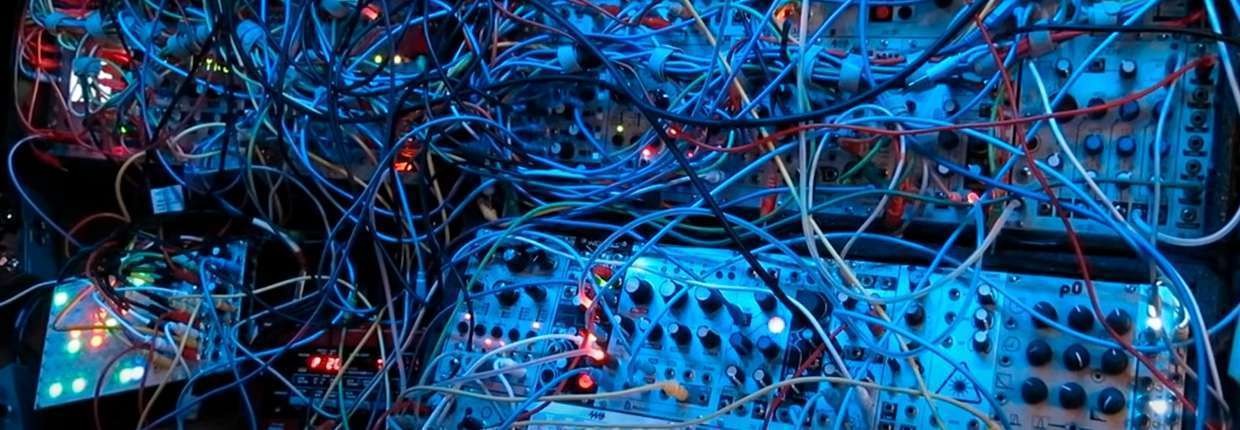
In this post we shall try to understand how to choose a Eurorack filter. When using subtractive synthesis techniques the starting point is a harmonic rich signal processed by selectively removing frequency components to get the desired tone.
The selection of the specific filter contributes to the final sound even more than the oscillators included in the system.
One of the advantages of the modular systems is the possibility to mix and match components (eventually from different brands) to carve the sound based upon the needs, the sensitivity and the taste of the artist.
A filter is an amplifier capable of applying a different gain selectively against the different frequencies of the incoming signal.
The types of available filters are:
Low pass filter: allows the transit of frequencies below a given value named Cutoff Frequency
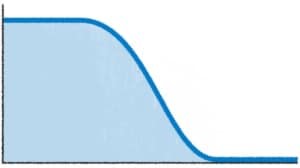
High pass filter: allows the transit of frequencies greater than the Cutoff Frequency
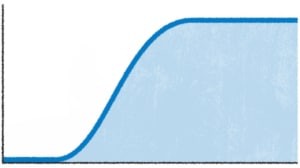
Band pass filter: allows the transit of frequencies between two given values named Lower Cutoff Frequency and Higher Cutoff Frequency with the Bandof the filter being the difference between the Cutoff Frequencies
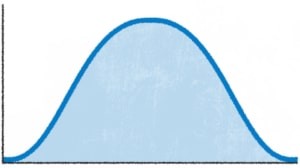
Notch filter: allows the transit of all frequencies but those included in a given band
As always happens in the real life, things are never just black or white. Also in the filter’s case we have something similar. The transition between allowed and blocked frequencies is way over to be abrupt.
We talk about the Filter Slope which measures how steep the transition curve is in deciBel per Octave (dB/oct). Typical values are 12 dB/oct or 24dB/oct (with possible deviation from this norm).
The higher the slope the stronger is the filtering effect.
Another typical effect of the filter response is the Resonance. This consists in an increase of the gain around the Cutoff Frequency as shown in the next picture for a Low Pass filter.
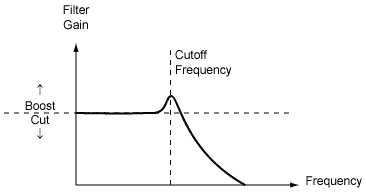
The resonance peak (the highest gain value) has a relevant impact on the sound as it emphasizes a narrow zone (band) of the signal spectrum. In some cases the filter can loose its stability and become an oscillator.
Being the filter a component used to sculpt the sound, several times it has the possibility of saturating the amplifier introducing harmonics and a sort of “sonic signature” to give even more character to the sound itself.
Filters can be of several topologies.
The most infamous low pass filter is the one designed by Bob Moog who pioneered the analog synthesis technology often defined as “east-coast” (since Moog started his profession in Trumansberg, New York). With this approach the objective was to replicate the natural sounds (this approach evolved over time) with electronic circuits. The Bob Moog Low Pass Filter (LPF) di Moog is the so called Ladder Filter.
On the other side of the States (Berkeley, California) Don Buchla had a different approach not necessarily bound to the replication of natural sounds. With a different starting point also the circuit’s topology were different. The filter derived here was the Low Pass Gate (LPG) which is strictly connected to the so-called “west-coast” approach.
Following this link you’ll find an interesting paper about those two approaches.
Close to Bob Moog but with some difference there is the Steiner-Parker filter.
Is a low pass filter with a slope of 24dB/oct. Its topology is part of the music history. The name derives by the placement of the transistor network used to select the capacitors (and so the Cutoff Frequency). The shape of the network looks like a ladder.
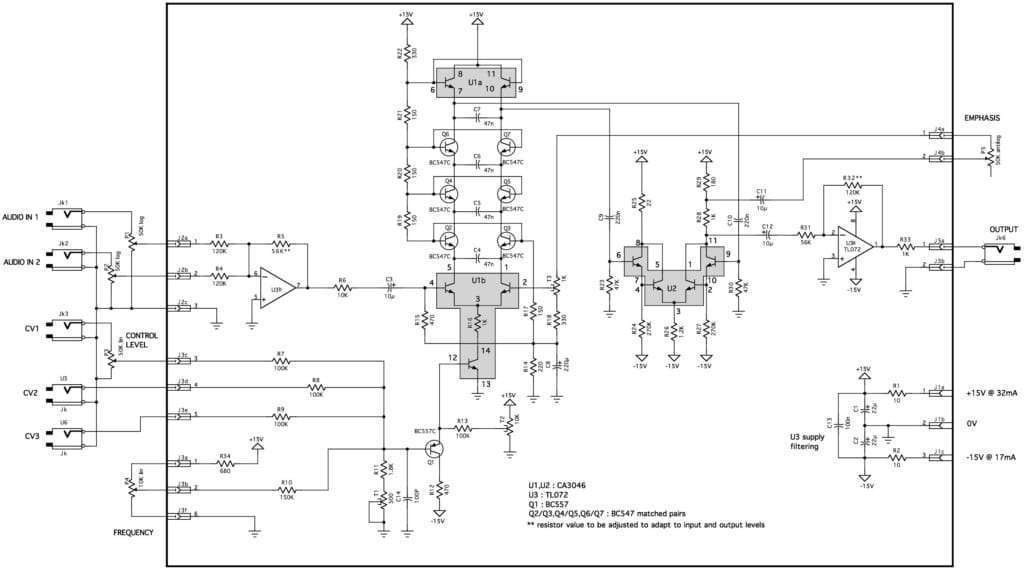
The Low Pass Gate (LPG) is a filter that works as a VCA. It is closed until the voltage level on a given node (the Control point) is lower than a given threshold. As soon as the proper voltage is applied the filter opens but adds also an amplitude modulation to the incoming signal. Also the cutoff frequency is modulated and the final result deserves to be listened to. The LPG uses Vactrol. The Vactrol is an opto-coupler made by an LED (light source) and a light dependent resistor (a component whose resistance changes with the applied light). The control signal makes the resistance change in a nonlinear way (and this make things even more interesting). If this nonlinear resistance is placed in such a way to change both signal amplitude and cutoff frequency we get the Low Pass Gate.
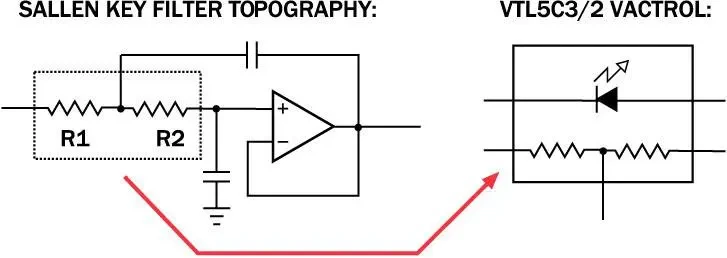
With this circuit the capacitors used to determine the cutoff frequency are selected by polarizing some diodes (in the Bob Moog case those were transistors).
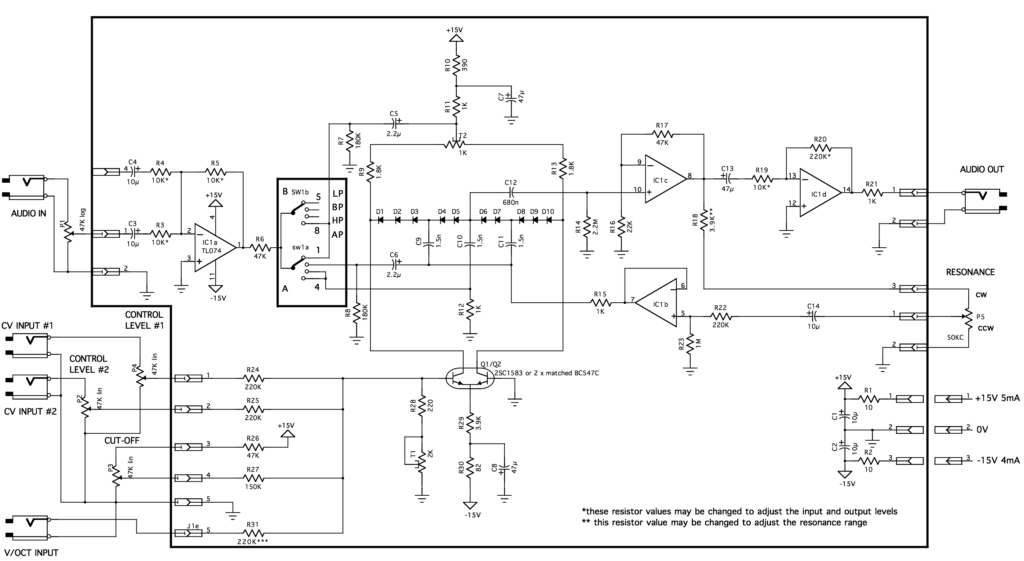
A lot of different filter topologies are available on the market but those are the most important for musical applications.
To achieve musicality, personality and versatility a Eurorack filter needs to have a specific voice and a great amount of controllability of all the parameters.
It is worthwhile to mention that a filter with a lower slope will let more harmonic content to pass yielding to a richer and more articulate sound.
This is not necessarily an advantage as, sometimer, a stronger cut might be appropriate.
Things to be controllable are:
All those parameters have to have manual controls as well as a patchable configuration to allow the proper integration of the filter in the specific modular environment with the required capabilities of control and modulation.
The higher the control capability of the filter the better will be its capacity to comply with the artistic requirements of the composition.
Just to give an example (and, being such, it is not representative of the whole lot of possibilities offered by the market) let’s briefly talk about the Mutable Instruments Blades.
It is a dual multimode filter with a slope of 12dB/oct. It allows the manual control of all the parameters and all of them are also patchable to CV signals.
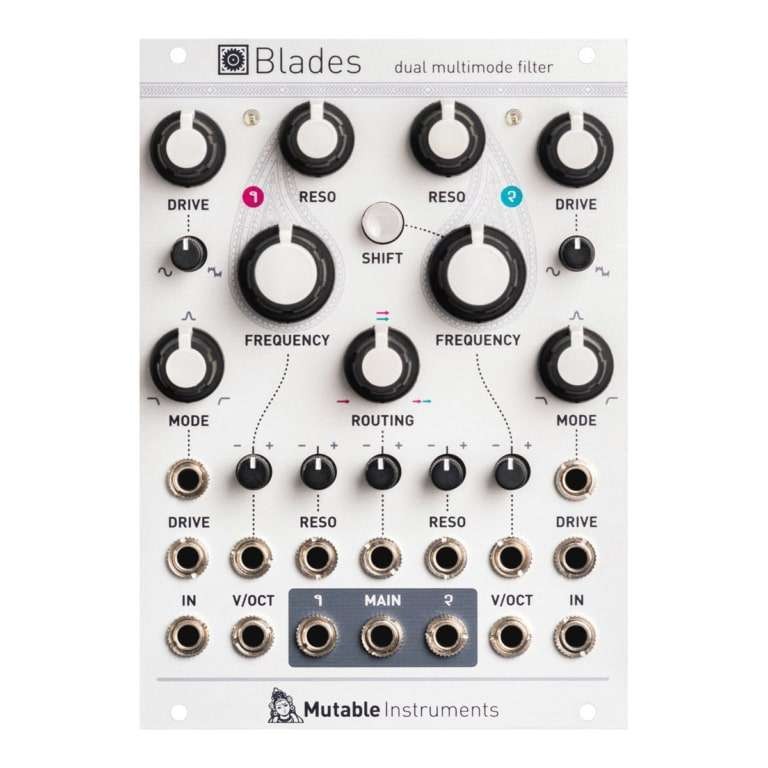
A very interesting feature of this device is the possibility of continuously varying the filter’s connection as well as the filter type.
The connection can be continuously morphed among single filters, series or parallel.
Each of the filters can be morphed among Low Pass, Band Pass and High Pass.
The possibility to morph these configurations opens to hybrid behaviors that can lead to unusual and interesting sounds.
The output signals (per filter) are available separately or combined.
As one can easily understand this device is versatile and capable of very interesting things useful in several scenarios.
As alway happens in the Eurorack world, making the right choice can be difficult. Quite often the best way is to have more than one option.
Here we have tried to think about all the aspects that we feel important to get the required awareness in orienting the selection. Let the music guide you!
Join us today and get 5% off your next order!

Empty cart